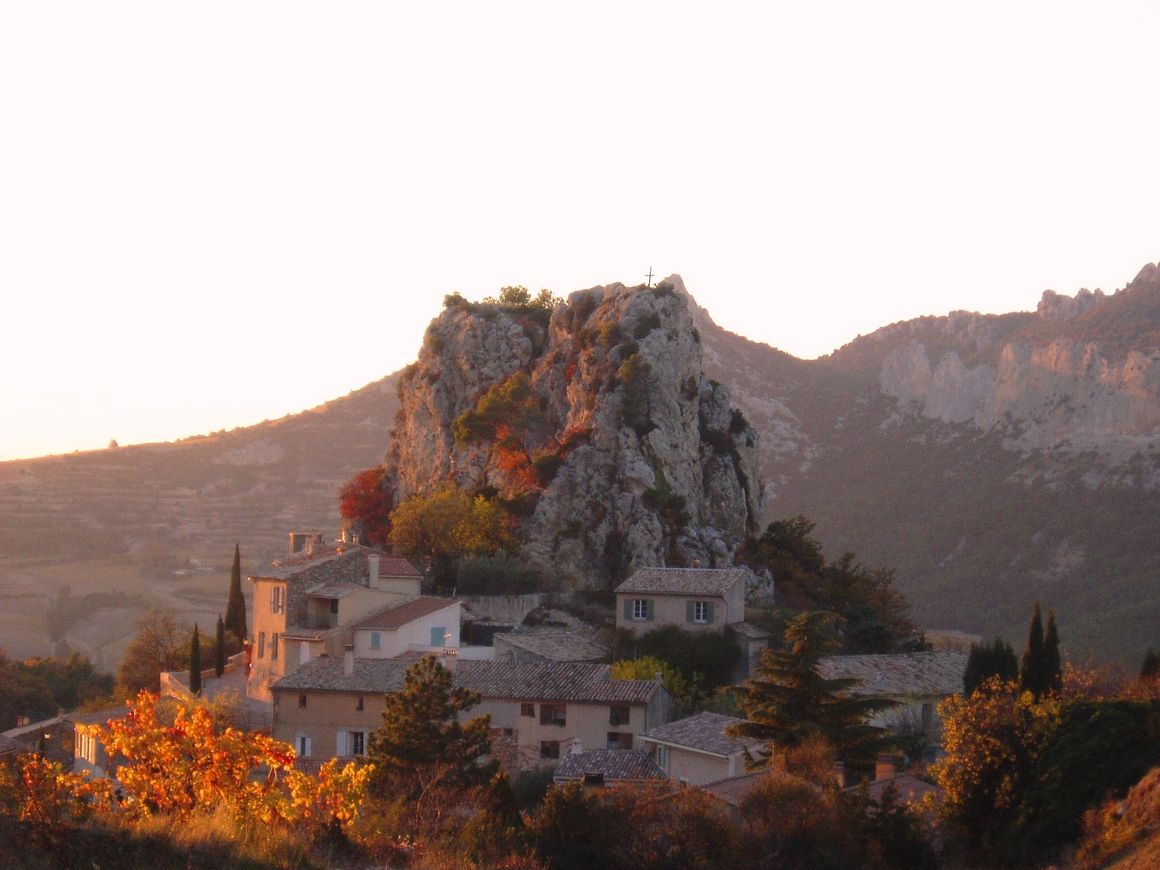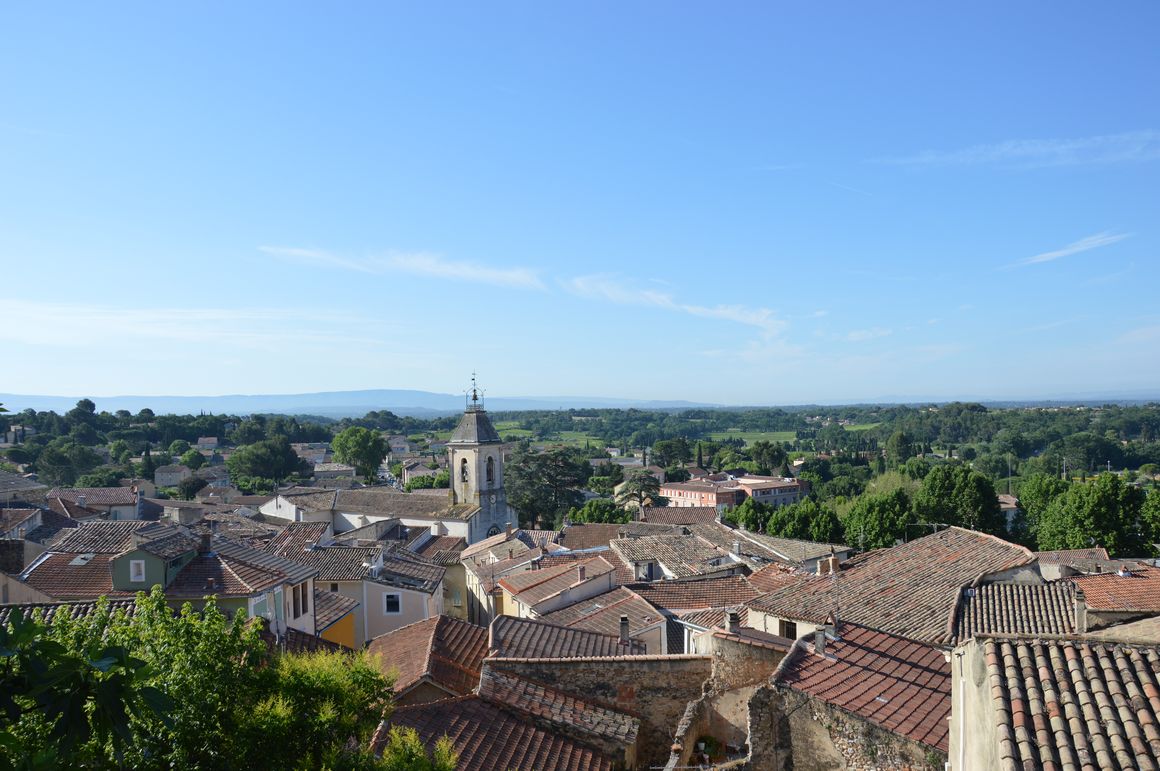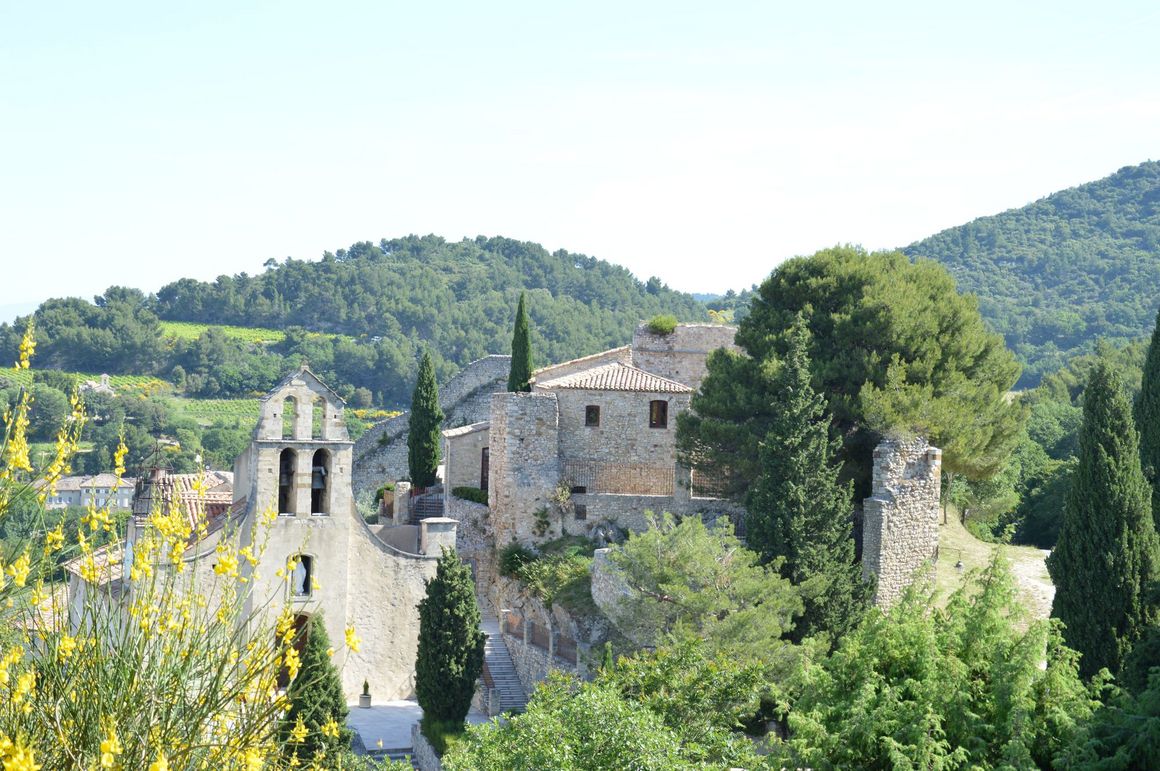The Massif of the Dentelles de Montmirail is known for its climbing, hiking and exceptional wines. Both amateur and expert climbers relish the challenge of the sheer mountain faces, whilst enjoying the panoramic views. Walkers are also well-catered for with its three parallel mountain chains. It is the home of the famous Beaumes de Venise, Vacqueyras and Gigondas vintages !
It is called ‘Dentelles’ because the erosion shaped these mountains in such a way that the rock, sculpted and eroded over time, seems carved like a lace ribbon in a unique shape, making it a climber’s paradise. ‘Montmirail’ comes from the Latin ‘mons mirabilis’, meaning ‘admirable mountain’
The Dentelles de Montmirail is an unusual name !
The site of the Massif of the ‘Dentelles de Montmirail’ is known for its exceptional wines and its sheer mountain faces that are perfect for climbers. But why is it called that? It is called ‘Dentelles’ because the erosion shaped these mountains in such a way that the rock, sculpted and eroded over time, seems carved like a lace ribbon in a unique shape, making it a climber’s paradise. ‘Montmirail’ comes from the Latin ‘mons mirabilis’, meaning ‘admirable mountain’.
The Dentelles de Montmirailis an exceptional landscape!
The Dentelles de Montmirail is an extraordinary landscape with rocks, forests and vineyards. The peak is the Crête de Saint Amand (with an altitude of 732m), located in Suzette. The Massif is split into three parallel chains:
• the Chaîne du Clapis (south side), made up of the Grand Montmirail, La Salle and the Rocher Saint Christophe,
• the Dentelles Sarrasines and
• the Chaîne du Grand Travers located to the north in the elongation of Saint Amand.
Rising high above the vineyards, looking over the villages, the Dentelles are a feature of the landscape in a category of their own.
The plant life found there is Mediterranean (aromatic plants, evergreen oaks, Aleppo pines, etc.) and the vineyards on the slopes produce prestigious vintages; the Vacqueyras and Gigondas vintages, Muscat and Beaumes de Venise wines.
The Dentelles de Montmirail also attract visitors thanks to the variety of activities on offer. You can wander through the villages and there are places that are perfect for outdoor activities like hiking, mountain biking and climbing.
Getting to the Dentelles de Montmirail
From Lafare: located just 4km from the village of Beaumes de Venise, the Massif des Dentelles can be reached via Lafare. After arriving in the village from Beaumes de Venise, take the second small road going down on your left. There is a sign that says, ‘Dentelles de Montmirail’. If you are driving a large vehicle, it is recommended that you park in the village’s main car park as the road that leads to the Cassan vineyard is difficult for larger vehicles. You can then take the footpath the rest of the way.
From Gigondas: from the village of Gigondas, follow the signs for ‘Dentelles de Montmirail’. Pass in front of the Hôtel des Flôrets, heading to the Col du Cayron. Leave your vehicle in the car park located almost directly opposite. The Col du Cayron is 500m away on foot.
Rocher de Rocalinaud is also known as the ‘lunar rock’
Rocher de Rocalinaud, also known as the ‘lunar rock’ (‘rocca lunal’ in Provençal) is a heap of sand that has been formed and sculpted by the wind, rain and man for over a million years. It is what remains of an underwater sand dune that was formed during the Miocene (the fourth geological period of the Tertiary period which lasted from 24 to 5 million years ago). At Rocalinaud, a strange, hooked cap can be seen. There are several dips in the rock that collect rainwater for the animals. Wandering around this giant sand structure will make you think about the caves that were created by man, who used it as shelter from prehistoric times up to the 16th century.



